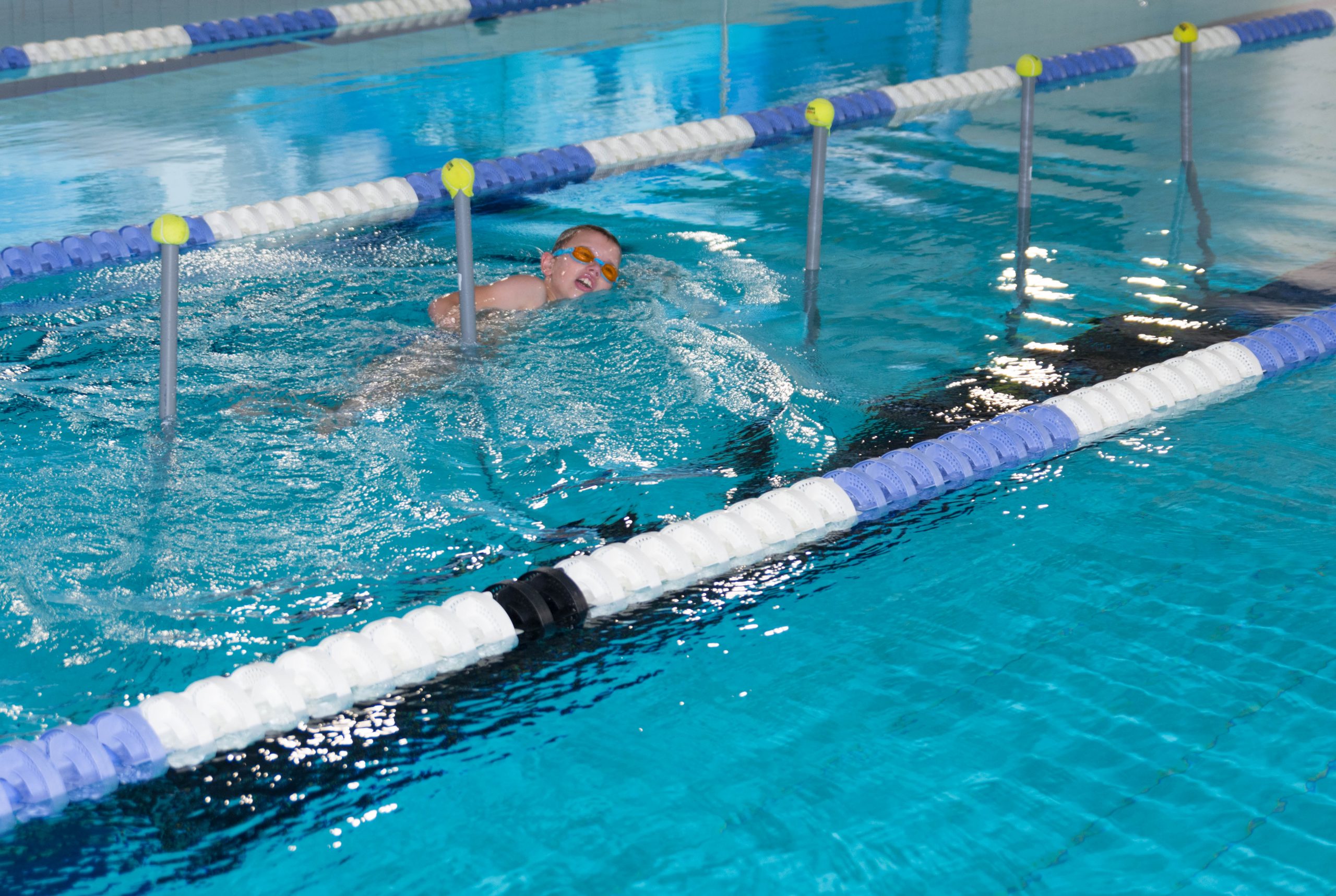
A good swimming performance is not just about being able to swim very fast. It requires strength, technique, flexibility, stamina and mental skills. Factors that can be evaluated per swimmer, although how someone “coordinates” through the water is still an unknown factor. And that while this so-called “motor coordination” is such a good indicator for talent, says Jeroen Houtepen, student motion technology at The Hague University of Applied Sciences. He and Lisa de Koning graduated with their model of a circuit – the Swim Skills Track (SST). This provides insight into the coordination skills of children between 9 and 12 years of age.
The SST is part of one of the ‘talent development’ projects at the InnoSportLab De Tongelreep (a sports innovation and research center in Eindhoven, The Netherlands). Supervising these two were Aylin Post, PhD student, movement researcher and Embedded Scientist at the InnoSportLab De Tongelreep, and Peter Beek, Professor of Behavioral and Movement Sciences at the Vrije Universiteit Amsterdam.
Motor skills
There are five basic motor skills: speed, coordination, strength, agility and stamina. Children learn these skills by playing (outside). They then jump, run and throw. Which is important, because the more you practice, the better you get. Seeing what a child is capable of at a young age will help them in their subsequent sports career, De Koning explains.
As early as 1995, René Wormhoudt collaborated with Professor Geert Savelsbergh from VU Amsterdam on the design of the Athletic Skills Model (ASM) at Ajax. This talent development model was originally intended for sports, but may now be used for assessing the talent of anyone’s motor skills. The ASM can also be used to encourage children to exercise more.
Joris Hoeboer developed the Athletic Skills Track (AST) as part of the ASM, a motor skills test for physical education. Which formed the basis for the circuit in the water, says De Koning. “You can also use the AST to test a child’s motor skills, except that this is then done on land. It looks a bit like a monkey cage.”
They came up with seven different exercises that young swimmers have to do as efficiently as possible. “Efficiency is a good indicator of how well a child moves in water,” explains Houtepen. “We use the same style as an IQ test. Furthermore, there are have several other tasks. All of it says something about the overall motor skills involved in swimming,” says Houtepen.

Swim like a dolphin and crawl like a tiger
The start immediately launches the first test too: as in, a child is only allowed to start when they hear the buzzer. Then they dive off the starting block, swim underwater through a circle using a dolphin-style kick and crawl across a mat like a tiger (they are only allowed to use their arms). They swim to different points within an area of two by two meters in order to test their reaction speed and orientation. Then they turn around, swim fast for six meters and then four meters backwards, climb back on a mat, dive into the water and tap the pool wall.
Not boring
“The most important thing for us was that children should really enjoy it,” says De Koning. “In order to be able to say something about motor skills, a child has to complete the circuit several times. So it shouldn’t start to get boring.”
The very first test at the beginning of October showed that the children had a good time. Houtepen: “The children were initially allowed to do a practice lap, then do it three times as fast as possible. They all wanted to have another go after that just because they enjoyed it so much.”
Puberty changes everything (maybe)
As a swimming coach at PSV (football club), Pim van Hedel sees that so much can change due when puberty hits and kids start to grow. He mainly trains the juniors, 12 to 15 year olds. “Not only do they change physically, but their motivation and mentality might also change. It is good to discover talent at a young age. Then you will be able to give that child the right attention which could really benefit them later in life.”
Now talent is mainly selected well in advance. You are also able to see whether someone has got great technique. But it is still a bit of a gamble. Someone who is fast at a young age will not necessarily be fast when they’re older. Through using more of these tests you can look at other factors that can’t be measured or observed. That adds more depth.”
The SST is still in its infancy says PhD student and movement scientist Aylin Post who supervised the project. “The next step is to see if the SST also correlates with tests that are considered to be the gold standard on land. Like the KTK-NL test (Body Coordination Test for Children, ed.) The baseline is in place, now we have to see if the SST actually measures the seven coordination capabilities that we want to measure. We will keep up the research on this.”

